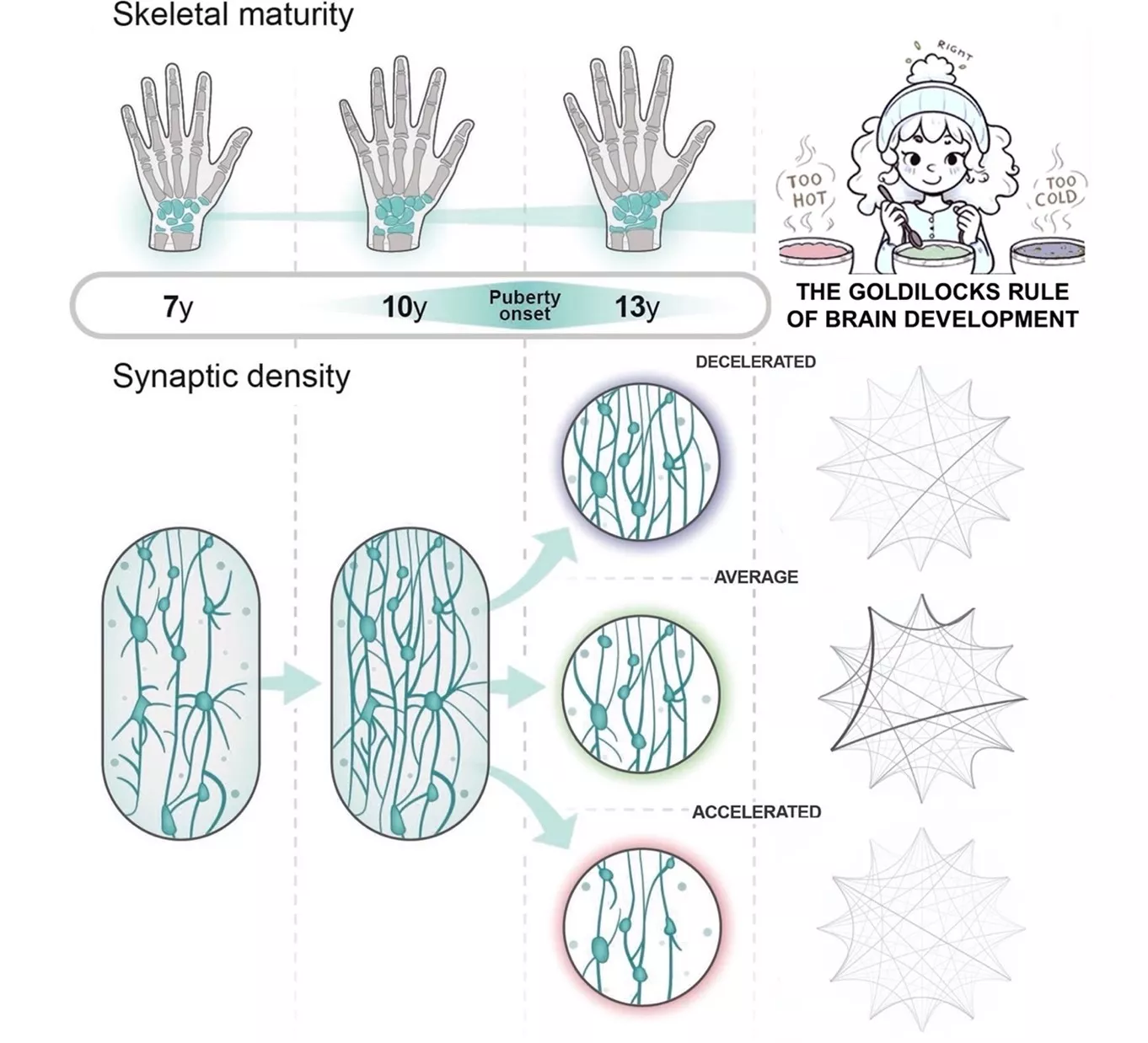Researchers from the HUN-REN-ELTE-PPKE Adolescent Development Research Group (SFK), collaborating with scholars from the Pompeu Fabra University, Barcelona, and the University of Oxford, UK, have investigated cortical networks through the lens of thermodynamics. Their analysis revealed that there is an optimal pace of pubertal maturation with respect to hierarchical cortical organization. The results are published in the open access interdisciplinary journal, Advanced Science.
One important element of the story of Goldilocks and the Three Bears is the porridge with just the right temperature, not too cold and not too hot, but just right. This concept has been adopted by scientific thinking as well. For example, there is the habitable, or Goldilocks, zone, which indicates planetary distances within a star system that allow for the formation of life as we know it. In international collaboration, researchers from SFK, Ilona Kovács and Ferenc Gombos, along with Hanna Szakács from the Pázmány Péter Catholic University (PPKE), have identified the Goldilocks zone of adolescent brain development.
The researchers from SFK recently introduced ultrasound bone age assessment into adolescent research, providing a much more accurate estimation of adolescent maturity than ever before. This is important because puberty not only signifies physical maturation but also triggers significant reorganization of the brain and a transformation towards adult-like behavior. The onset of puberty can vary widely. In their study examining brain development, they investigated three groups of adolescents with differing levels of maturity. The bone age of participants in the average maturity group was similar to their chronological age, while those in the decelerated group had younger bone ages, and those in the accelerated group had older bone ages than their chronological age. The question was whether the level of hierarchical cortical organization differed among these groups of varying maturity.
Brain development was monitored using high-density resting-state electroencephalography (HD-EEG), which registers the brain's default mode network. This network is particularly active when the brain does not receive external stimuli and has no specific action goals. This type of intrinsic activity is crucial for adapting to the environment, interpreting it, and predicting it. The level of organization of the default mode network was analyzed within a theoretical framework borrowed from thermodynamics. According to the second law of thermodynamics, material systems tend to move irreversibly from order to disorder over time. As disorder increases, so does "entropy production," which in living systems represents a one-way, irreversible flow within the state space of components. Applied to the microstates of the brain, this implies that transitions between states occur in an organized hierarchy and asymmetrically.
The results indicate that age does not play a prominent role in entropy production, but the level of maturity is decisive. Surprisingly, however, entropy production is not directly proportional to the degree of maturity. The highest estimated entropy value based on HD-EEG was observed in the group with average maturity, where bone age corresponds to chronological age. In this group, puberty onset and the maturation process are neither slow nor fast but proceed at the average rate corresponding to secular trends, and where cortical hierarchical organization appears to be most optimal.

Figure 1: The Goldilocks zone of brain development
One possible interpretation concerns synaptic density depicted in the left panel of Figure 1. The density of connections between cortical neurons gradually increases during childhood, followed by an intensive synaptic 'pruning', starting at the onset of puberty. It is hypothesized that this pruning refines the existing neural connections into networks characteristic of adults. It is conceivable that if pruning begins too early (accelerated), the network becomes excessively sparse; whereas if it starts too late (decelerated), the density of connectivity remains excessively high. Both scenarios may be associated with more symmetric transitions in the brain's microstates (right panels of Figure 1: the thicker and darker a line, the more asymmetric the transition between two microstates). Although it is not yet clear whether the measured maturity-dependent differences persist into adulthood, investigating the educational and clinical implications of developmental trends diverging from the optimal based on the presented results could be of paramount importance.